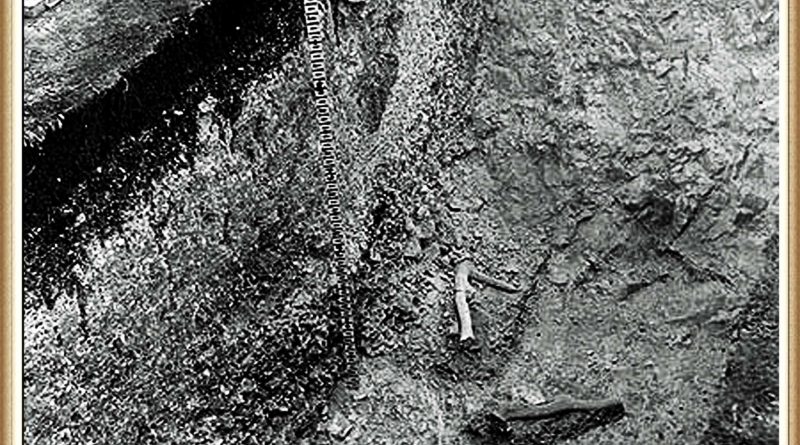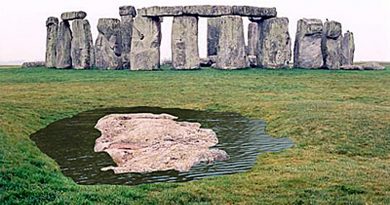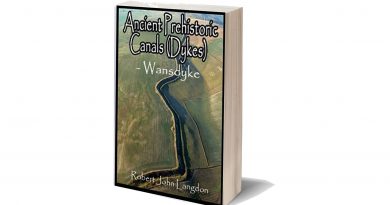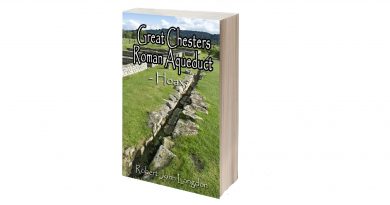The Stonehenge Hoax – The Ditch
When is a ditch not really a ditch? ………………………………… (The Stonehenge Ditch)
The Problem
The Stonehenge ditch is something the archaeologists don’t frequently (if at all) discuss or publicise as it is not a ditch as we commonly know it, which has baffled them since its first excavation. The fact that this Ditch is ‘unique’ in the world, which you would imagine would be promoted as such, but they prefer to hide their lack of understanding of this feature and say nothing, for the Stonehenge Ditch is not a ditch but a series of pits with walls, seats and stone holes in the base that goes against the current theories about the site.
The Solution
If groundwater was contemporary in the past, then some evidence should still be present. Consequently, one of the more fascinating facts found when studying any prehistoric site is that the constructors spent disproportionate time digging ditches to surround their monuments, whether around henges or barrows.
This practice would be considered strange, even if the prehistoric builders had practical, modern, labour-saving tools. But unfortunately, our ancestors only benefited from stone tools, bones, and antlers, making such excavation exceptionally slow, cumbersome, and even more bewildering.
Looking at Avebury (a henge monument) as an example, the most conservative archaeological estimation suggests that the ditches surrounding Avebury would have taken 1.5 million-working hours to build. That’s equivalent to 100 people working 12 hours daily, every day, for 3.5 years. On the other hand, making a wooden palisade using the same tools would have taken less than one month – merely 2% of the time and exhaustion.
Current archaeological theories surrounding these ditches maintain that they were used either as defensive fortification and/or a landscape feature to keep in/out animals or, even more recently, bizarre interpretations such as a ‘ceremonial’ feature to ward off evil spirits.
This shows the levels of desperation the archaeologists have descended into in recent years in an abortive attempt to understand basic structures, such as a moat. Moreover, these quaint ideas strike me as somewhat flawed as a ditch is significantly less effective than a palisade (a long line of sharpened wooden stakes planted into the ground), which would have been considerably more straightforward, quicker to construct and more effective. As for evil spirits, would not a tiny 6-inch channel achieve the same symbolic purpose as a huge five-metre ditch?
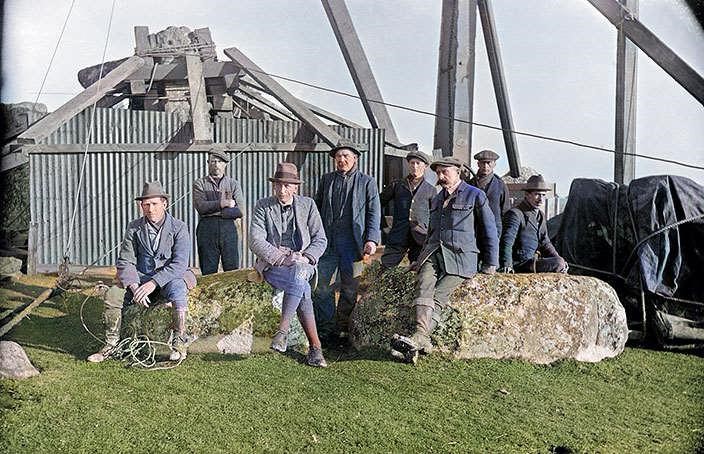
Lt-Col William Hawley, was one of the amateur archaeologists employed by the Ministry of Works to undertake excavations at our famous monuments Stonehenge and Avebury in the 1920s. But unfortunately, he was not the most ‘careful’ of archaeologists. This was a view shared by colleagues such as Atkinson in his book, ‘Stonehenge’ 3rd edition, London 1979 – where he suggests that Hawley’s methods were somewhat ‘inadequate’.
Despite this accusation of carelessness, he could still find some strange features, which can be seen as evidence of a moat. For example, below a layer of chalk rubble infill (chalk which would have fallen naturally into the Moat when it was disused) under a layer of flint, he discovered ‘foot-trampled mud’ (Cleal et al., 1995,p.68) – found in an area of chalkland which has no natural mud/clay, with an associated ‘layer of struck flint’ – which he found in many segments.
Now, this sounds quite interesting, if not conclusive as evidence of the existence of a moat, until you look for other landscape features with similar foundations, which, when analysed, start to build up a much more conclusive picture. Such landscape features can be found in ‘dew ponds’.
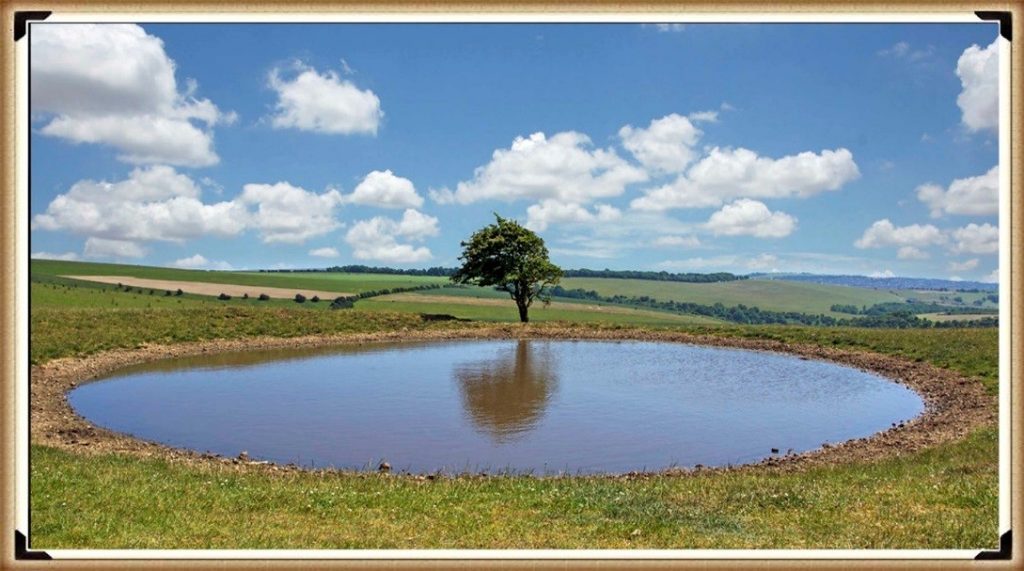
A dew pond is an artificial pond usually sited on the top of a hill, intended for watering livestock. Dew ponds are used in areas where a natural supply of surface water may not be readily available. The name dew pond (sometimes cloud pond or mist pond) is first found in the Journal of the Royal Agricultural Society in 1865. Despite the name, their primary source of water is believed to be rainfall rather than dew or mist.
The mystery of dew ponds has drawn the interest of many historians and scientists, but until recent times there has been little agreement on their early origins. It was widely believed that the technique for building dew ponds had been understood from the earliest times, as Kipling tells us in Puck of Pook’s Hill. The two Chanctonbury Hill dew ponds were dated, from flint tools excavated nearby and similarity to other dated earthworks to the Neolithic period.
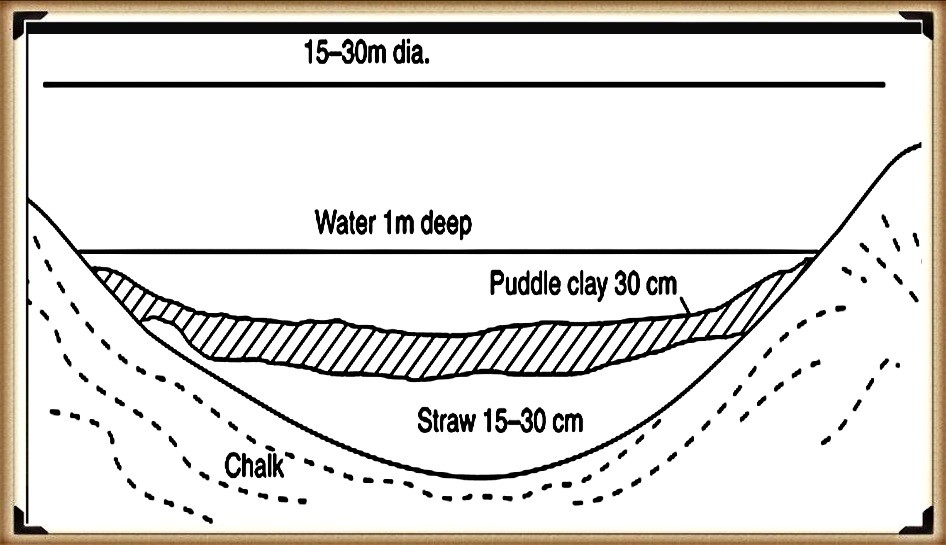
Profile of a typical dew pound construction – The Stonehenge Ditch
They are usually shallow, saucer-shaped, lined with puddled clay, chalk or marl on an insulating straw layer over a bottom layer of chalk or lime. To deter earthworms from their natural tendency of burrowing upwards, which would in a short while make the clay lining porous, a layer of soot would be incorporated or lime mixed with the clay. The clay is usually covered with straw to prevent cracking by the Sun and a final layer of chalk rubble or broken stone to protect the lining from the hoofs of sheep or cattle.
In 1877 Mr H. P. Slade discarded the term ” dew-ponds ” in favour of ” artificial rain-ponds” and scouted the idea that dew had any part in filling ponds. His remarks dealt practically with one pond, the greatest diameter of which was 69½ feet, which was constructed in 1836 at the cost of £40. It was bedded in the Thorpe Downs, near Loughborough, on the Berkshire Hills, at the height of 450 feet above the sea level. Being ” fed from the heavens,” this fact probably gave rise to its being classed as a dew-pond. The base of this pond was a layer of thick clay (mixed with lime to prevent the working of earthworms, a coating of straw “to prevent the Sun cracking the clay,” and, thirdly, a layer of loose rubble. Moreover, for 40 years, till 1876, the pond had only been dry once.
Nonetheless, Hawley can be forgiven for not recognising that this clay lining feature was being used to stop the water from being absorbed through the porous chalk back into the bedrock, as he was not looking for a moat, as he was ‘reliably’ informed by his geologists, that the surrounding area, (Stonehenge Bottom) has been dry for over half a million years and therefore did not have a raised water table in the past.
Hawley also found evidence of what he called a strange ‘dark soil layer’ which existed within the primary fill; in many parts of the ditch, I would strongly suggest that this ‘dark soil layer’ consisted of decayed remains and sediment, possible the hay which is traditionally lined with the clay to stop cracking. Moreover, organic matter would have naturally floated to the bottom (like a pond) over time, especially if it had not been cleaned regularly. This would naturally have left a lining of dark soil at the bottom of the Moat was it fell into disuse and became dry
By 1923 Hawley reported that this ‘ubiquitous dark layer’ was found throughout his excavations, sometimes up to 8″ thick, suggesting its existence in water would have been for some considerable length of time, and it was resting directly at the bottom of the moated ditch. This ‘Dark Layer’ was also observed by Atkinson in 1954 when they recut a piece of Hawley’s trench (segment 98) and found the same dark layer – not flint this time, but a stone layer. Moreover, he described the soils above as loamy (sand and clay) (Evans et al., 1984, 7-30) and that this layer (like the construction of dew ponds) was “often associated with a ‘layer’ of struck flint, which was found in many segments” (Cleal et al., 1995, p.68), to protect the clay lining.
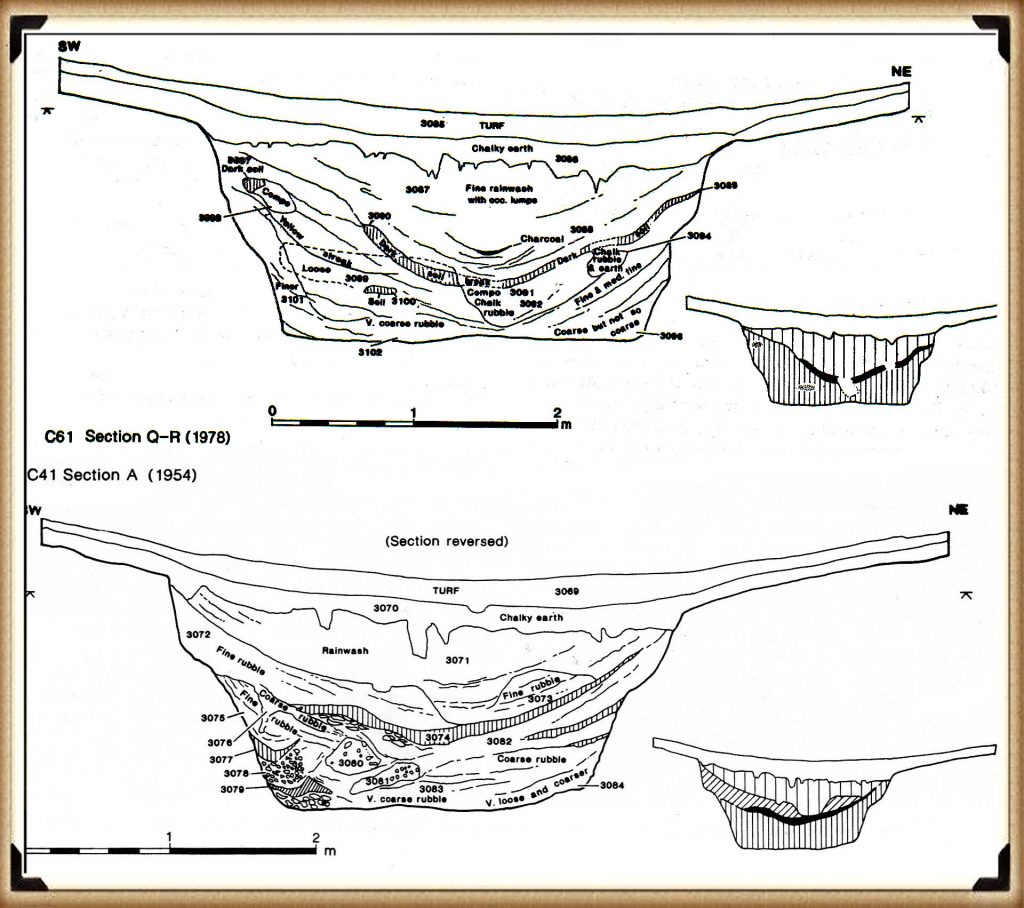
It has now been established that Stonehenge had, at some stage, a layer of waterproofing, the ‘layer of foot-trampled mud’ plus a ‘layer of struck flint’ added to the ditch. It’s also been established that this ditch was, at some point, filled with water for quite some considerable amount of time, as evidenced by the deep ‘dark layer’ sediment.
Hawley’s finding of other moats that surrounded the north and south mounds, which ‘connected’ to the Stonehenge moated ditch, escalated this use of the ditch as a moat.
On the shallow associated banks of the ditches, he finds lots of what he calls ‘yellow marl’ – “there was a quantity of the yellowish marl within the ditch and about the site of the palisade” (Cleal et al., 1995, p.278) – Marl was originally an old term loosely applied to a variety of materials, most of which occur as loose, earthy deposits consisting chiefly of an intimate mixture of clay and calcium carbonate, formed under freshwater conditions; specifically an earthy substance containing 35–65% clay and 65–35% carbonate. (Pettijohn, F. J. (1957). p.410)
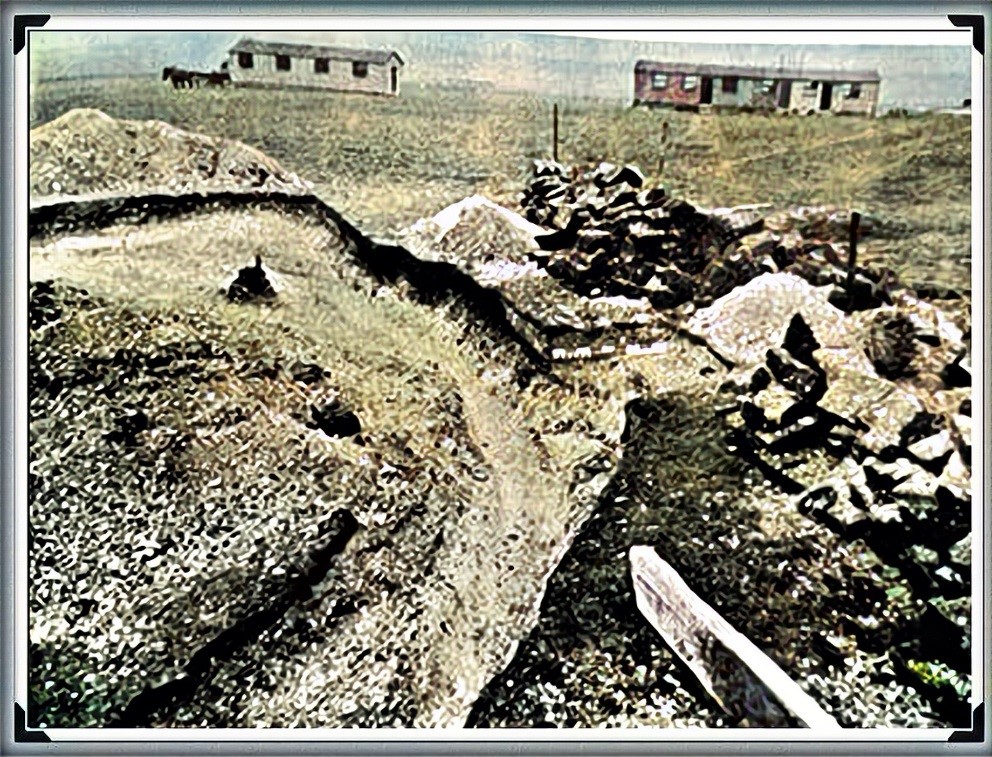
As this marl had fragments of Blue and Sarsen stones within it – this clearly shows that ‘freshwater’ was in the moat and present at the time of construction.
If you look at the remains of the Stonehenge moat today, it appears very shallow and uneven, but when excavated, it looks very different. It is, in fact, a series of ‘individual pits’, which, in places, are connected by shallow walls.
This opens up a series of fascinating unanswered questions:
- Was the ditch half-finished, for the pits differ in size, shape and depth, or perhaps they were ‘dodgy Welsh builders’ who did not know what they were doing?
- If the ditch is defensive or symbolic, as some archaeologists suggest, why not pile the chalk on one side rather than both sides?
- Why are their seats or shelves left in the ditch?
- Why are there stone holes at the bottom of the moated ditch?
The ability to build defensive structures was available to our ancestors. Still, they decided not to use it on this occasion, as clearly it was made for another purpose, and that purpose was as a groundwater-filled moat.
The only reason you would cut the ditch down to different levels is to search for the groundwater level under the chalk bedrock. As chalk is a porous substance and water travels freely through it, the groundwater table over an area like Stonehenge can vary by a metre or so depending on the makeup of the chalk, as water runs through the fault lines in the chalk strata, leading to varying groundwater levels over an area.
This variation of groundwater tables would also explain why the builders left shallow walls and why none of the walls went up to the surface – so the water could flow between the individual pits.
Why did the builders then chosen Stonehenge area to build a site?
CHALK
Our ancestors needed a place with a chalk sub-soil as it has two exceptional properties – it’s porousness and its resistance to dissolving in water.
The problem with chalk is that it’s difficult to excavate, almost impossible. So, if Mesolithic Man wanted an easy time and needed a large defensive ditch, he would have chosen a site with soft soil, unless he’s insane or had nothing better to do for the next few years!
These builders were attracted to chalk and its unique characteristics. Not only is it porous, but it is SLOW porous, which means that a pit or hole below the local groundwater table would gradually fill with or empty with water at a consistent rate. In addition, because it’s part of the limestone family, it would not crumble and dissolve.
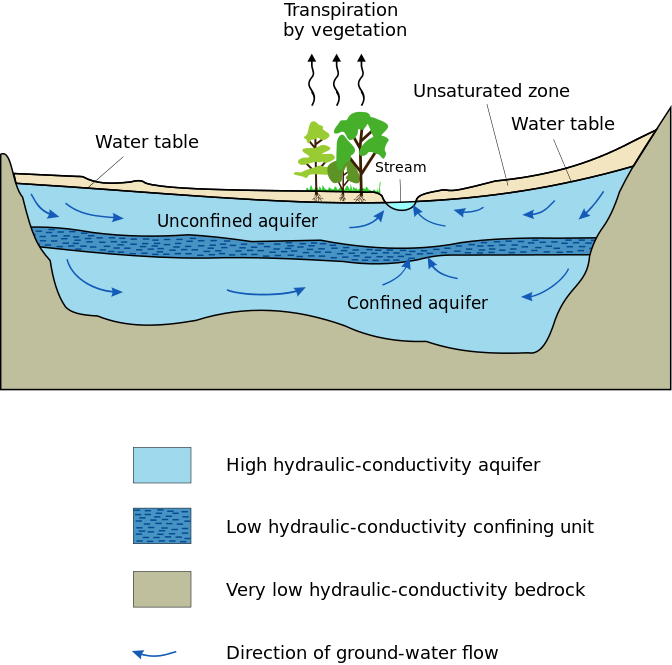
If these moats are used in conjunction with natural groundwater reeds (Phragmites australis is one of the main wetland plant species used for phytoremediation water treatment) and placed on the shelves within the ditch, the result is pure, clean freshwater good enough to drink comparable to modern tap water. This type of water purification would not be seen in Britain for another 8,000 years. It would also leave Hawley’s unidentified ‘dark layer’.
Ground Water
Groundwater tables were far higher than we experience today due to the meltwater of the last ice age raising the water table. For a site like Stonehenge, this would mean that the monument would have been surrounded by groundwater on three sides, as the springs in Stonehenge’s bottom would have leaked thousands of litres per spring water per second over thousands of thousands of thousands of years.
Recent geological studies have recognised the multitude of Springs and groundwater in this area “Geology has a great influence on landscape including shape of the ground, vegetation and groundwater in terms of potential springs and water sources….. Stonehenge is located on a plateau area with groundwater draining east towards the River Avon and south towards and beneath dry valleys including Stonehenge Bottom (Fig. 28). Water supply would have been plentiful… Having discovered this new geology in the Chalk at Stonehenge further studies are required to assess its implications for landscape evolution and habitation.” Rory N. Mortimore, et. al. Stonehenge—a unique Late Cretaceous phosphatic Chalk geology: implications for sea-level, climate and tectonics and impact on engineering and archaeology, Proceedings of the Geologists’ Association, Volume 128, Issue 4, 2017
So much groundwater was found the pa[per pointed out that: “Cancellation of the original proposed A303 Stonehenge Tunnels and the Amesbury to Winterbourne Stoke improvements was in large part due to the unexpected geology and unexpected groundwater conditions around Stonehenge which led to construction costs more than doubling to £470 million in July 2005.
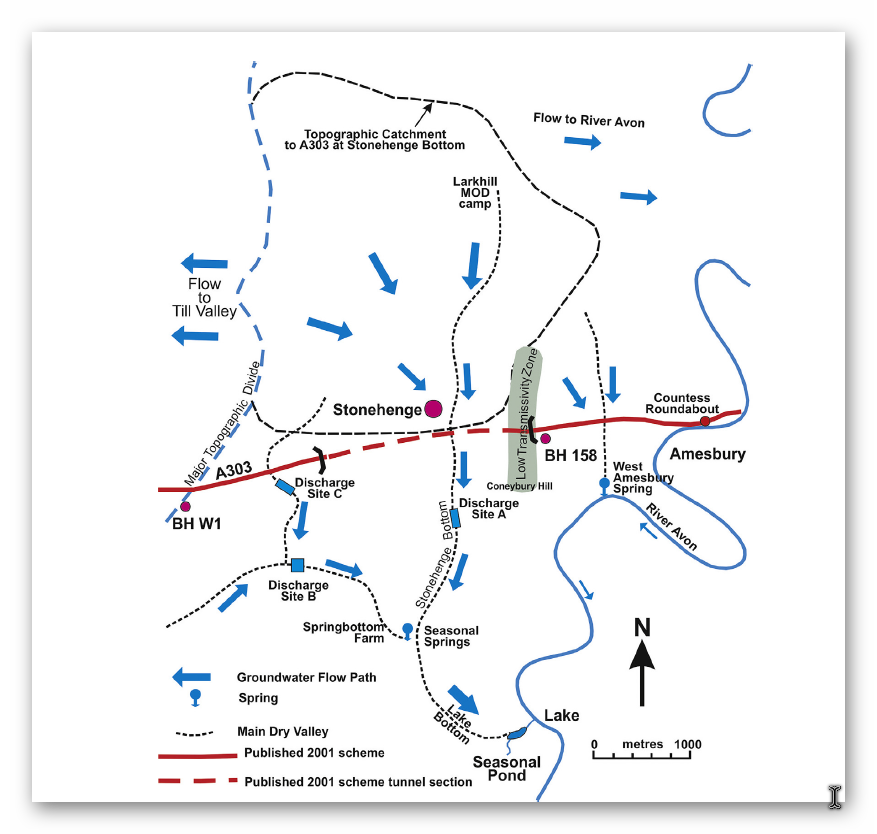
”
| Fig. 28. A303 Stonehenge tunnel area conceptual groundwater flow regime. Stonehenge Bottom acts as a drain to the area with a spring located downstream at Spring bottom. Farm and a seasonal pond in Lake Bottom close to the River Avon. During the rapid rise in groundwater levels in 2002 the floor of Stonehenge bottom became flooded up to the A303 crossing and Trial Pits on the west side partly filled with water |
This high groundwater would permeate into any pits or ditches dug below the water table, and this water would be FILTERED by the chalk; as recent findings at Blick Mead have found, the water temperature is fixed at a constant 50F throughout the seasons, even in the coldest winters, where the water would steam in the colder atmosphere. Therefore, the ditches surrounding Stonehenge were deliberately cut by our ancestors below the groundwater table to allow them to fill with warm, filtered, clean drinkable water.
It is commonly agreed amongst both geologists and archaeologists that ‘dew ponds’ could be used in areas without natural springs for drinking water, so why didn’t our ancestors build a “dew pond”– why go through the enormous and challenging task of building a 100-foot ring ditch full of freshwater pits?
Moreover, from the archaeological evidence, I would suggest that the active moat from the start of the Phase 1 period at Stonehenge (when the water table was at its highest) and the river Avon was 30m higher than today, changed as the river levels dropped in the Neolithic Period, so did consequently, the height of the moat. Therefore, this civilisation decided to line the moat with clay and flint to keep the waters high and preserve its use until, eventually, it was impossible to protect, and at this point, Phase 2 of the site involved the introduction of the massive sarsen stones and construction of the Avenue, as they adapted the site for a new purpose.
However, the mystery of this ring ditch/moat deepens when you look at the other ditches in the prehistoric world, which shows that the ditch is not a single cut, but a series of individual pits interlinking to each other, with walls and seats cut into the chalk – which is not seen anywhere in the prehistoric world.
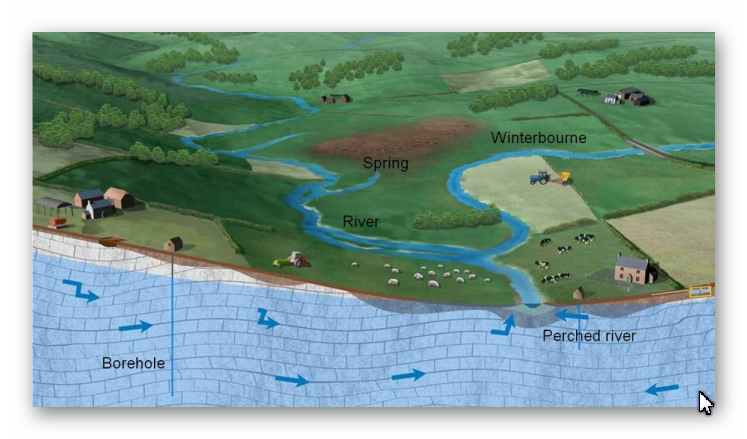
For more information about British Prehistory and other articles/books, go to our BLOG WEBSITE for daily updates or our VIDEO CHANNEL for interactive media and documentaries. The TRILOGY of books that ‘changed history’ can be found with chapter extracts at DAWN OF THE LOST CIVILISATION, THE STONEHENGE ENIGMA and THE POST-GLACIAL FLOODING HYPOTHESIS. Other associated books are also available such as 13 THINGS THAT DON’T MAKE SENSE IN HISTORY and other ‘short’ budget priced books can be found on our AUTHOR SITE. For active discussion on the findings of the TRILOGY and recent LiDAR investigations that is published on our WEBSITE you can join our FACEBOOK GROUP.

